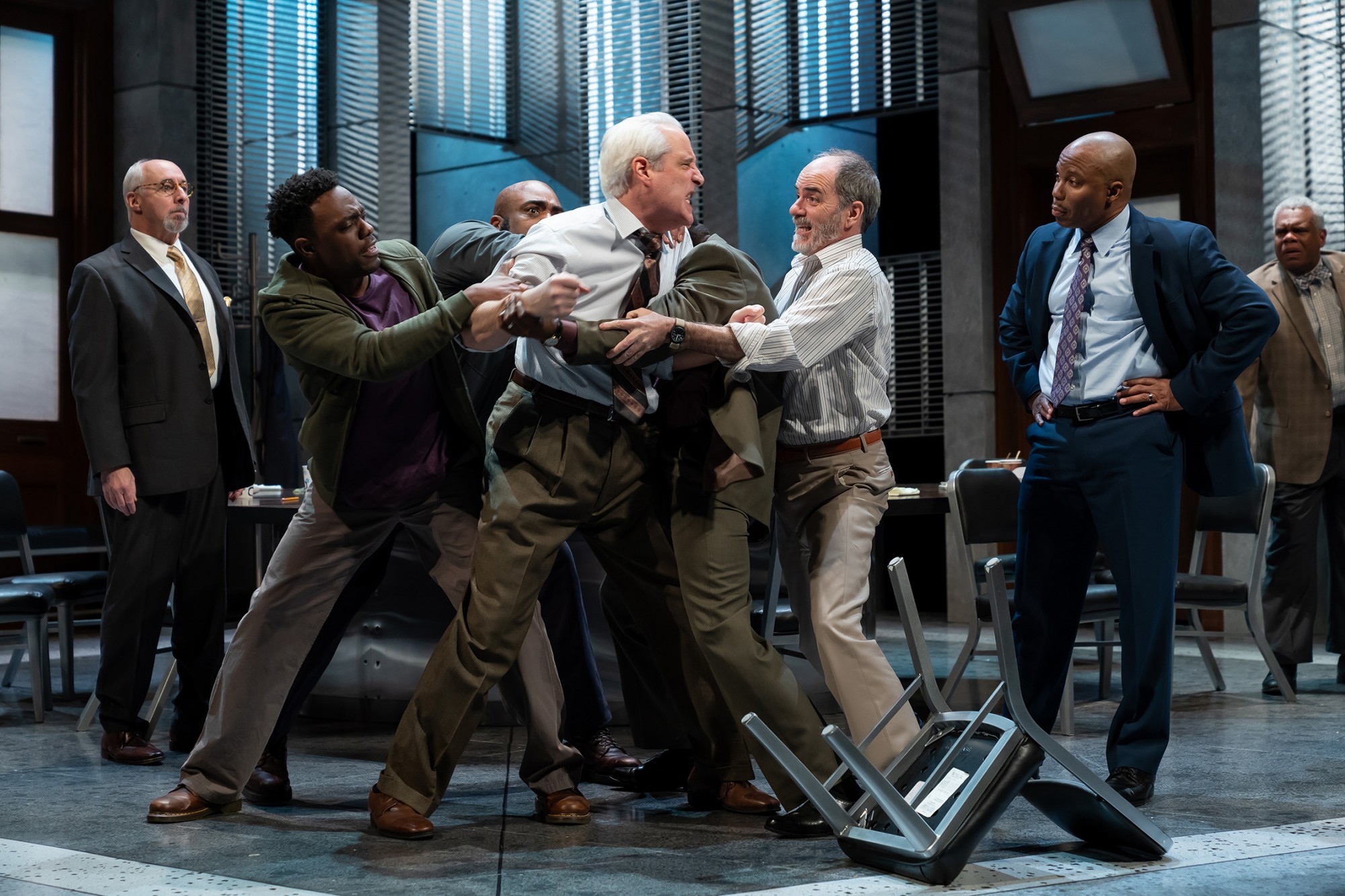
Twelve Angry Men and the Creation of a Genre
In a country of laws, it’s not surprising that Americans have an innate fascination with court proceedings. That fascination can be traced back to the very beginnings of our nation. Early in our history, news of trials were widely read by Americans. By the first half of the 20th century, some cases became so popular that the phrase “trial of the century” was often used. For example, Leon Czolgosz’s trial for the assassination of President William McKinley in 1901, the Leopold and Loeb trial of 1924 and the Lindbergh kidnapping trial of 1934 were all labeled as such and followed closely by nearly every American citizen and people around the world. The advent of radio and, later, television only fueled Americans’ interest in court procedurals. But, it was in 1954 that writer Reginald Rose emerged as the father of the “courtroom drama.”
Rose served in the army during World War II from 1942 to 1946, and, once back in civilian life, worked for the CBS network writing teleplays that explored social issues for the live anthology program Studio One. Rose and his work are generally credited with creating the template for slice-of-life types of drama.

While working for CBS, Rose was called to jury duty and placed on a panel for a manslaughter case. Of the experience, Rose said in a 1997 interview with The Daily News, “It was such an impressive, solemn setting in a great big wood-paneled courtroom, with a silver-haired judged.
We got into this terrific, furious, eight-hour argument in the jury room. I was writing one-hour dramas for Studio One in Hollywood, and I thought, ‘Wow, what a setting for a drama!’”

Rose wrote Twelve Angry Men for Studio One in 1954, and the piece was originally broadcast as a television play. A year later, Rose adapted the teleplay for the stage and, in 1957, wrote the screenplay for the film adaptation with Henry Fonda playing Juror Eight. Fonda’s performance and the film both became a cultural phenomenon.
Twelve Angry Men was revolutionary in that it dared to explore a moral dilemma. Are our opinions and beliefs predisposed by race and social class? Fonda’s earlier work in classic films like The Grapes of Wrath and Mister Roberts showed him as the prototypical stoic male figure, but his Juror Eight became a hero for stopping a miscarriage of justice. Juror Eight’s relentless drive to cast reasonable doubt on the evidence presented by the prosecution slowly begins to tear down what the other 11 jurors believe.
The film Twelve Angry Men had such cross-cultural appeal that Germany, China, India, Japan and Russia have all filmed their own versions of Rose’s original. Here in America, Supreme Court Justice Sonia Sotomayor cited the original film version as a definitive influence in her pursuit of a law degree (from The New York Times, “The Movie That Made a Supreme Court Justice,” Oct. 17, 2010).

After the success of Twelve Angry Men, Reginald Rose created The Defenders starring two unknown actors: Dustin Hoffman and Robert Redford. The Defenders became one of TV’s earliest examples of courtroom dramas. Courtroom dramas are serialized in books and are frequently seen on the big screen and on stage. Today such dramas account for a substantial percentage of American television programming. Some of the most popular dramatized titles include: The Practice, Law and Order, Boston Legal, Perry Mason, L.A. Law, Matlock, Ally McBeal, JAG, Damages, The Closer, Ironside and How to Get Away With Murder. England’s popular Broadchurch was watched by millions of fans across the world.
Reginald Rose’s idea for courtroom drama paved the way for programs exploring the lives of attorneys, judges, defendants, detectives and police as they investigate and ultimately solve a crime. Fans of the genre tend to have strong and varied opinions about endings and resolutions on their favorite shows.
In the last 10 years, courtroom dramas and police procedurals have reached a new peak in popularity. Our fascination with them may rest entirely in the ability of the genre to explore complex themes that give center stage to issues and situations akin to challenges we face in our daily lives. Streaming services report that seasons of courtroom dramas and police procedurals are what most of us binge watch.

Today, reactions to Twelve Angry Men and Juror Eight are as complex as when the film first came out: for some, Juror Eight shakes the very foundation of our American justice system, while others view his powerful arguments and ability to change the mind of others as proof of a strong system that works as intended. Still, for others, the work highlights the racial undercurrent in American life.
After 65 years, Reginald Rose’s Twelve Angry Men remains a true American classic and one that is in a class all by itself. Our new production, directed by Sheldon Epps, plays Ford’s Theatre January 18 to February 17, 2019.
A version of this essay appears in the playbill for Tweleve Angry Men at Ford’s Theatre.

